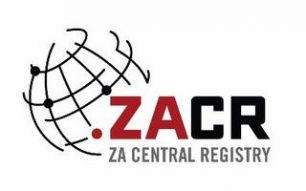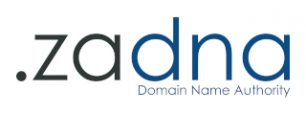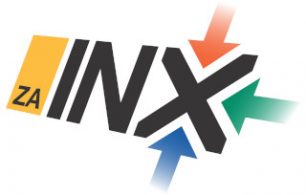Press Release:
National Fibre Mapping Project Highlights Minimal Choice of Fibre Providers
Published on: 2024-03-14The Internet Service Providers’ Association of SA (ISPA) NPC today released the results of its Open Access Network (OAN) mapping project, conducted in partnership with mapping specialists 28East. An OAN is an infrastructure network provider delivering wholesale fibre services to Internet Service Providers (ISPs) that then form the basis for internet services provided to end users.
According to ISPA chairperson, Sasha Booth-Beharilal, the results clearly indicate that many South African consumers have no choice of fibre service provider.
“This means that these consumers are not able to enjoy the pricing and quality benefits of infrastructure or service based competition.” says Booth-Beharilal.
An analysis of the overlap between the maps of two dozen open access networks indicates that nationally, 33 million people (54% of South Africa’s population) live in a location where at least one fibre operator provides a service, while 27 million citizens (46% of the population) are not yet covered. Of those who have at least one FNO providing service, more than a third have no choice of operator.
Here is how the numbers look based on population and on the number of households. The Western Cape and Gauteng lead the race for both coverage and competition, while citizens of Limpopo appear to be the least well-served by fibre providers.
| Region | Population | No OAN | Monopoly OAN | Choice of OAN |
| Eastern Cape | 6,735,599 | 69% | 15% | 15% |
| Free State | 2,949,107 | 63% | 22% | 15% |
| Gauteng | 15,652,452 | 13% | 23% | 64% |
| KwaZulu-Natal | 11,660,403 | 60% | 17% | 23% |
| Limpopo | 5,766,375 | 81% | 11% | 8% |
| Mpumalanga | 4,725,254 | 68% | 15% | 17% |
| North West | 4,151,744 | 63% | 22% | 16% |
| Northern Cape | 1,308,270 | 59% | 27% | 14% |
| Western Cape | 7,092,792 | 7% | 24% | 69% |
| National | 60,041,996 | 46% | 19% | 35% |
| Region | Households | No OAN | Monopoly OAN | Choice of OAN |
| Eastern Cape | 1,640,821 | 64% | 17% | 19% |
| Free State | 946,596 | 61% | 23% | 17% |
| Gauteng | 5,555,383 | 14% | 23% | 63% |
| KwaZulu-Natal | 2,912,560 | 52% | 20% | 29% |
| Limpopo | 1,530,180 | 78% | 12% | 10% |
| Mpumalanga | 1,297,621 | 67% | 15% | 18% |
| North West | 1,328,752 | 62% | 22% | 16% |
| Northern Cape | 372,562 | 60% | 27% | 14% |
| Western Cape | 2,099,500 | 7% | 23% | 70% |
| Grand Total | 17,683,975 | 40% | 20% | 39% |
ISPA acknowledged some limitations of the data used for the study, noting that only networks which publish mapping data could be used. This means that some consumers may still be able to purchase fibre services from closed network operators in locations where no open access networks operate. There are also limitations in the scale at which overlapping maps can be analysed while still matching them to census data. An FNO providing service in a suburb does not always provide service to all streets in the suburb so coverage in densely populated areas may be less than these figures suggest.
Despite these limitations, ISPA believes that the study gives a good high-level picture of the state of fibre-based internet access in South Africa. Comparing coverage against household income reveals that there has been a clear focus on covering the highest earning quintile of households, while both coverage and competition for lower income households lags behind.
| Region | Highest quintile income households | No OAN | Monopoly OAN | Choice of OAN |
| Eastern Cape | 210,128 | 29% | 20% | 51% |
| Free State | 99,493 | 24% | 21% | 54% |
| Gauteng | 1,678,536 | 3% | 8% | 88% |
| KwaZulu-Natal | 451,645 | 21% | 15% | 64% |
| Limpopo | 154,583 | 47% | 18% | 34% |
| Mpumalanga | 179,282 | 32% | 16% | 51% |
| North West | 126,329 | 29% | 23% | 48% |
| Northern Cape | 50,851 | 29% | 35% | 36% |
| Western Cape | 585,926 | 2% | 13% | 85% |
| Grand Total | 3,536,773 | 12% | 13% | 75% |
Nationally 88% of top quintile income households are located in areas with the choice of at least one OAN, and 75% of them have a choice of multiple OANs. However, when we look at the lower quintile income households, we see that only 38% of households are in locations with at least one OAN. Where there is no coverage, the majority (62%) have no choice of OAN and by effect, ISP.
| Region | Lowest quintile income households | No OAN | Monopoly OAN | Choice of OAN |
| Eastern Cape | 499,607 | 73% | 16% | 10% |
| Free State | 254,965 | 76% | 20% | 5% |
| Gauteng | 606,780 | 25% | 37% | 38% |
| KwaZulu-Natal | 722,982 | 63% | 22% | 15% |
| Limpopo | 487,991 | 87% | 10% | 4% |
| Mpumalanga | 296,192 | 79% | 13% | 8% |
| North West | 395,302 | 70% | 22% | 8% |
| Northern Cape | 82,537 | 75% | 19% | 7% |
| Western Cape | 190,437 | 15% | 32% | 53% |
| Grand Total | 3,536,793 | 62% | 22% | 16% |
Links to national and provincial open access coverage maps:
- South Africa
- Eastern Cape
- Free State
- Gauteng
- KwaZulu-Natal
- Limpopo
- Mpumalanga
- North West
- Northern Cape
- Western Cape
Further Information
For further information, please contact the ISPA secretariat on the Contact ISPA page.






